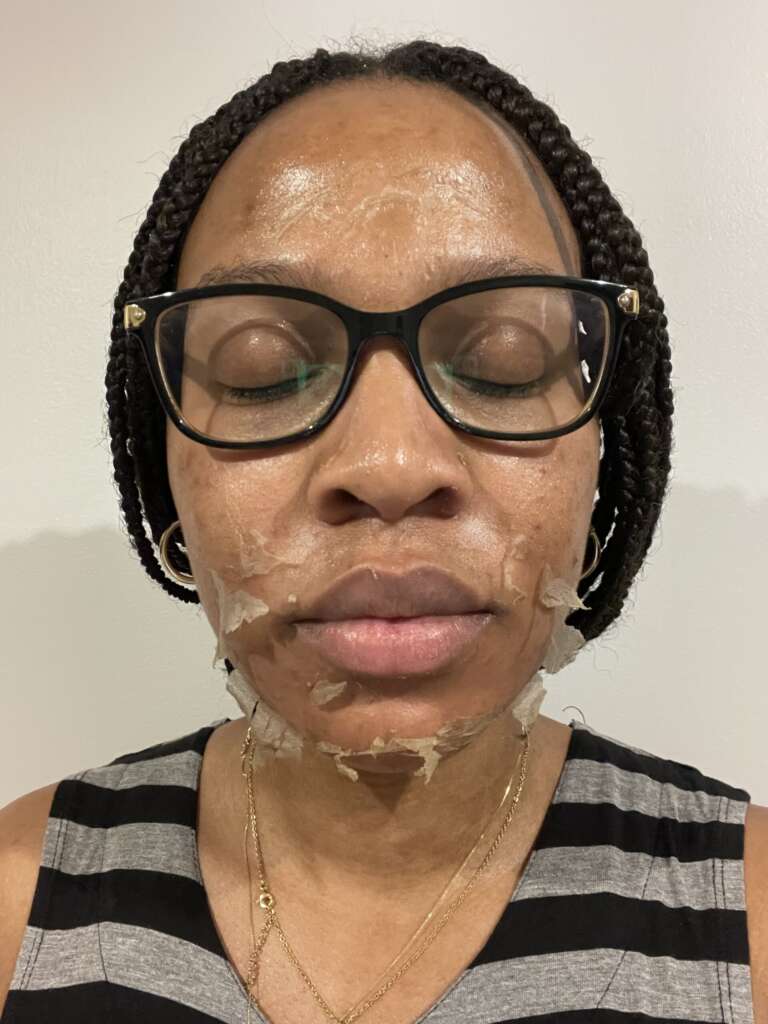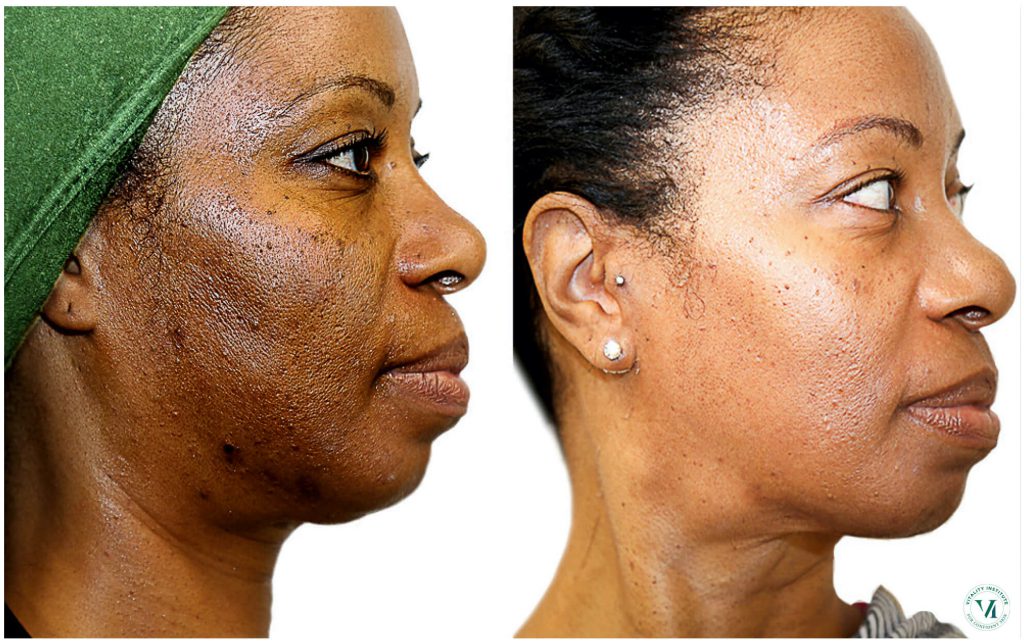Chemical peels and microdermabrasion are two popular cosmetic treatments that can help revitalize your skin and improve its overall appearance. Both procedures are non-invasive and can be performed in a dermatologist’s office or a medical spa. Let’s explore the benefits of each treatment:
Chemical Peels

Chemical peels are cosmetic treatments that involve the application of a chemical solution to the skin, which causes controlled exfoliation of the outer layers. This process helps remove dead skin cells, stimulate cell turnover, and promote the growth of new, healthier skin. Chemical peels can be tailored to various depths, ranging from superficial to deep, depending on the specific concerns being addressed.
Here are some important points to know about chemical peels:
Types of Chemical Peels:
- Superficial Peels: These peels are the mildest and generally use alpha-hydroxy acids (AHAs), such as glycolic acid or lactic acid, to exfoliate the outermost layer of the skin. Superficial peels are generally well-tolerated and require little to no downtime.
- Medium Peels: Medium peels penetrate deeper into the skin and typically use trichloroacetic acid (TCA) or a combination of TCA and AHAs. They are effective in treating fine lines, wrinkles, and pigmentation issues. Medium peels may require some downtime for healing.
- Deep Peels: Deep peels are the most aggressive type and involve the use of phenol or high-concentration TCA. These peels can address more significant skin concerns, including deep wrinkles, scars, and precancerous growths. Deep peels require substantial downtime and careful aftercare.
Benefits of Chemical Peels
Chemical peels offer several benefits for the skin, including:
- Exfoliation: Chemical peels effectively remove the outer layer of dead skin cells, promoting cellular turnover and revealing fresher, healthier skin underneath. This exfoliation process helps improve the skin’s texture, making it smoother and more radiant.
- Reduction of Fine Lines and Wrinkles: Chemical peels can help minimize the appearance of fine lines and wrinkles by stimulating collagen production. Collagen is a protein that provides structure and elasticity to the skin, and its production decreases as we age. By promoting collagen synthesis, chemical peels can help improve skin firmness and reduce the visibility of wrinkles.
- Improved Skin Tone and Texture: Chemical peels can address uneven skin tone, sun damage, and age spots. They can help fade hyperpigmentation, such as dark spots and melasma, resulting in a more even complexion. Additionally, chemical peels can smooth out rough skin texture and reduce the appearance of acne scars or other surface imperfections.
- Acne Treatment: Chemical peels can be an effective treatment for acne-prone skin. They help unclog pores, remove excess oil and bacteria, and reduce inflammation associated with acne breakouts. Regular chemical peel treatments can help control acne and improve the overall clarity of the skin.
- Enhanced Skincare Product Absorption: By removing the top layer of dead skin cells, chemical peels allow skincare products to penetrate the skin more effectively. This means that after a chemical peel, your skincare products, such as serums or moisturizers, can work more efficiently, delivering their active ingredients deeper into the skin.
- Boosted Confidence: Improving the appearance of your skin can have a positive impact on your self-esteem and confidence. Chemical peels can help address various skin concerns, leading to a more youthful, vibrant complexion and a renewed sense of confidence.
Microdermabrasion
Microdermabrasion is a non-invasive cosmetic procedure that involves exfoliating the outer layer of the skin to reveal a smoother, more radiant complexion. It is typically performed using a handheld device. That sprays tiny crystals onto the skin or uses a diamond-tipped wand to gently abrade the skin’s surface. The crystals or the wand are then vacuumed away along with the dead skin cells. Hence promoting cell turnover and revealing fresh, new skin.

- Exfoliation: Microdermabrasion is a mechanical exfoliation technique that helps remove the outermost layer of dead skin cells from the epidermis. This process encourages cell turnover and reveals fresh, healthier skin underneath. By exfoliating the skin, microdermabrasion helps to improve its texture, making it smoother, more refined, and youthful in appearance.
- Skin Rejuvenation: The exfoliation and stimulation caused by microdermabrasion promote the production of new skin cells. Which include collagen and elastin fibres. Collagen is a structural protein that provides firmness and elasticity to the skin, while elastin contributes to its flexibility. By enhancing the production of these essential components, microdermabrasion helps to improve skin tone, firmness, and overall appearance, giving it a rejuvenated and youthful look.
- Fine Lines and Wrinkle Reduction: As we age, the production of collagen and elastin decreases. This results in the formation of fine lines and wrinkles. Microdermabrasion stimulates collagen production and increases cell turnover. However, this can help reduce the appearance of fine lines and wrinkles over time. The renewal of skin cells and the resulting increase in collagen levels contribute to smoother, plumper skin, minimizing the signs of aging.
- Pigmentation Improvement: Microdermabrasion can be effective in reducing the appearance of pigmentation irregularities such as sunspots, age spots, and mild hyperpigmentation. By removing the outer layer of dead skin cells. It helps to even out skin tone and diminish the visibility of these pigmented areas, leading to a more uniform complexion.
- Acne and Acne Scar Treatment: Microdermabrasion can benefit individuals with acne-prone skin. It helps to unclog pores, remove excess oil and debris, and exfoliate the skin’s surface. By eliminating these impurities and promoting cell turnover, microdermabrasion can help reduce acne breakouts and improve the appearance of acne scars, making them less noticeable over time.
- Enhanced Product Penetration: The exfoliation provided by microdermabrasion removes the barrier of dead skin cells. Thus, allowing skincare products to penetrate more effectively. This means that the active ingredients in serums, moisturizers, and other skincare products can better reach the deeper layers of the skin, maximizing their effectiveness and delivering desired results.
- Minimized Pore Size: However, Microdermabrasion can help reduce the size of enlarged pores by removing excess oil, debris, and dead skin cells that can contribute to their visibility. As the pores become less clogged, they appear smaller and less prominent. Hence, resulting in a smoother and more refined skin texture.
- Minimal Downtime: Microdermabrasion is a non-invasive procedure that typically requires no downtime. It is considered a gentle treatment. Most people can resume their regular activities immediately after the session. This makes it a convenient option for individuals seeking skin rejuvenation without significant interruptions to their daily routines.


